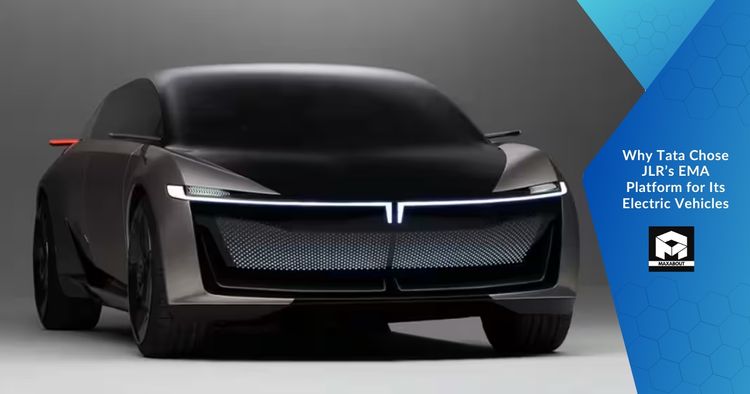Together with JLR, Tata Motors is going to utilize EMA Platform for Avinya Electric Vehicles
Tata Motors' recent collaboration with Jaguar Land Rover (JLR) has allowed it to make substantial strides in the electric vehicle (EV) market. Tata Motors' planned Avinya series of electric vehicles will be able to make use of JLR's born-electric Electrified Modular Architecture (EMA) thanks to this acceptance. This action not only gives Tata Motors access to an exclusive, well-known platform designed specifically for the Indian market, but it also offers JLR or its electric vehicles cost-saving options.
Using this partnership, Tata Motors will have access to a recognized and established platform, while JLR's electric car offers will benefit from cost savings potential customers. This mutual benefit agreement highlights the industry's shared commitment to sustainability and innovation and makes a turning point in the development of electric mobiliity in India. By joining forces with Jaguar Land Rover (JLR) to capitalize on JLR's born-electric Electrified Modular Architecture (EMA) for the forthcoming generation of electric vehicles, Tata Motors has taken a big step forward.
By this arrangement, JLR saves money while Tata Motors gains access to a well-known platform designed specifically for the Indian market. It represents the industry's joint determination to promoting economically viable electric mobility that is not harmful to the environment. When it came to the switch from ICE (internal combustion engine)-powered cars to electric vehicles (EVs), Tata Motors benefited from being the first entrant. As Mahindra and Maruti prepare for their own EV offers in late 2024, this momentum is critical. Maruti's eVX and Mahindra's XUV.e and BE series will soon be available. With access to JLR's recognized EMA platform, Tata Motors hopes to shorten time to market and provide a competitive advantage in the quickly changing EV industry. JLR's 2021-announced EMA platform will make its premiere in late 2024 with models such as the the next-generation Velar, Evoque, and Discovery Sport; Tata's Avinya series will follow in 2025.
Key factors
1. Tata Motors and Jaguar Land Rover (JLR) collaborated on the Avinya electric car line.
2. Approval of JLR's Electrified Modular Architecture (EMA).
3. The Indian market's access to a premium global platform.
4. JLR's possibility of cost savings.
5. The growth of electric mobility in India.
6. Highlight eco-friendly mobility and sustainability.
7.The efforts of Tata Motors to provide Indian customers with cutting-edge EVs.
Important Points
- JLR's EMA Platform The localization process: Jaguar Land Rover (JLR) plans to localize its EMA platform in India to facilitate easier access to domestic creation.
- Used Cost The Benefits: It is projected that the arrangement between JLR and Tata Motors will result in cost savings for both companies, enhancing their position as market leaders for electric vehicles.
- Beginning in 2025: The first Tata Motors model built on the EMA platform is expected to go on sale in 2025, which will be a big step toward increasing the availability of electric vehicles.
JLR's EMA Platform: A Properly optimized Method That Advances Both Brands
JLR's EMA Platform: A Properly optimized Method That Advances Both Brands
The Shailesh Chandra, the Managing Director of Tata Motors Passenger Vehicles and Tata the passenger Electric Mobility, provided information the reasoning behind opting for Jaguar Land Rover's (JLR) Electrified Modular Architecture (EMA) platform for Tata's upcoming Avinya line of electric vehicles in a recent interview with Autocar Professional. Chandra acknowledged that before to deciding on JLR's EMA, Tata Motors carefully considered a number of platform possibilities, including the idea of developing a skateboard-like design.

